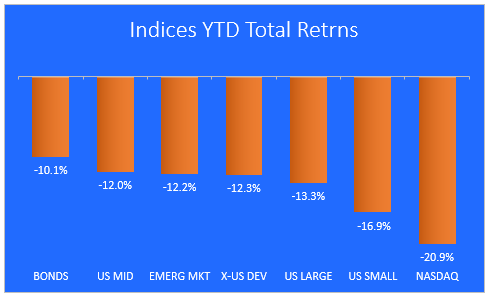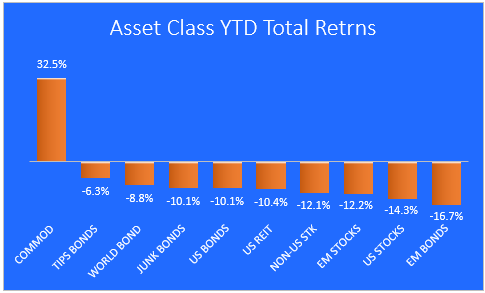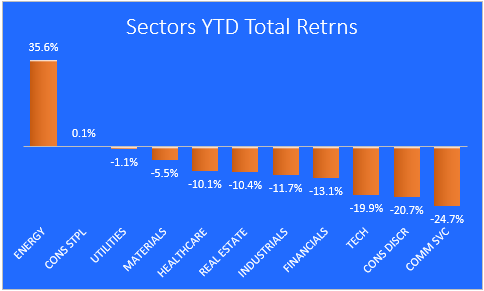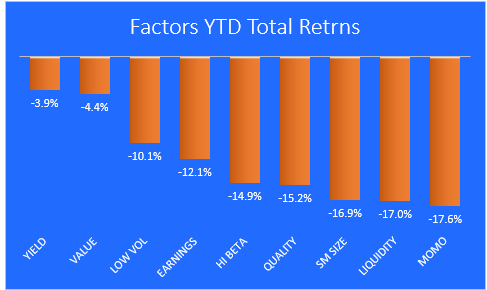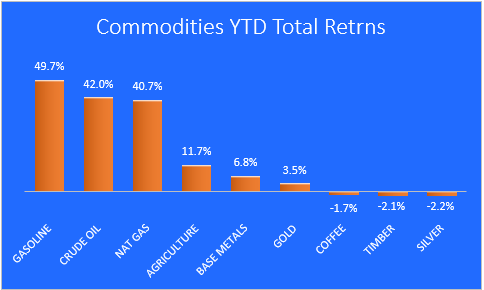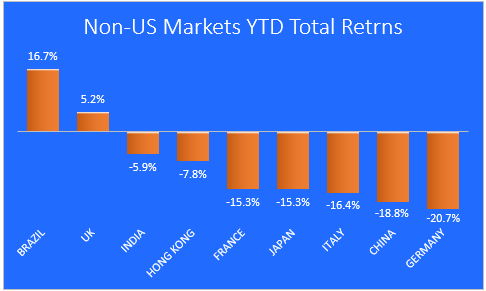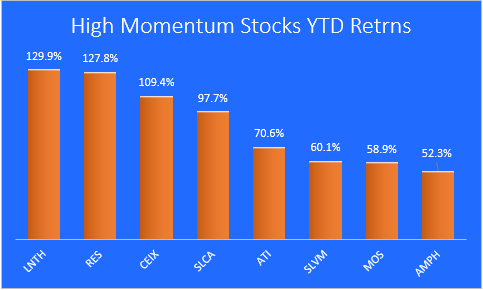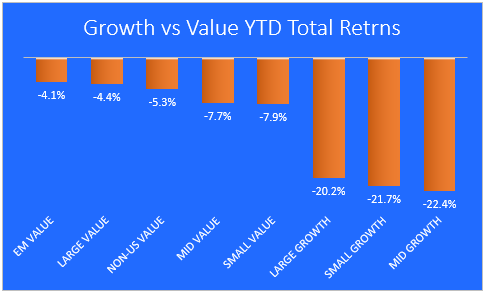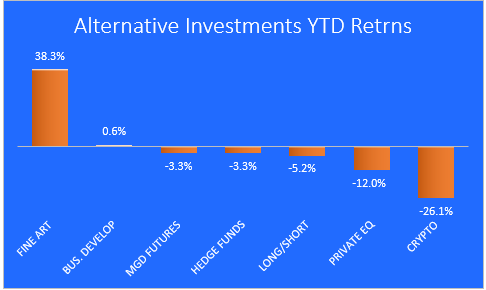Market X-Ray – The Story Behind The Numbers

Image Source: Pixabay
Global Market Indices
The market X-ray shows that bonds have been the most resilient of the major indices so far this year. In years past, bonds would be showing a small gain during a turbulent market, but they are down 10% this year.
Investors know that rates are headed still higher this year, so they are looking elsewhere for shelter from the equity storm. Bonds are widely expected to perform poorly this year. James Grant of Grant's Interest Rate Observer calls bonds "return-free risk."
Mid-caps, Emerging Markets, and non-US developed markets are holding up slightly better than the US equity market. Small-caps are struggling to keep up with their larger brethren. They are down -16.9% year-to-date.
In last place is the tech-heavy Nasdaq Composite index, which is now in a bear market, down by -20.9%. The 7 largest tech stocks combined are down by an average of 30% year-to-date. These same 7 stocks led the market higher last year.
Global Asset Classes
Commodities were the best performing asset class in 2021, and they are still in the top spot so far this year. Energy stocks have been leading this asset class higher.
Bonds are holding up better than equities, except for Emerging Market bonds which are in last place. When adjusted for inflation, real yields are still negative almost everywhere you look, and inflation looks set to get worse, at least in the first half of 2022.
Stock Market Sectors
After gaining 54.4% last year, energy stocks are miles ahead of the pack this year. Geopolitical tensions are adding fuel to the fire for these oil & gas producers, pipeline companies, and refiners.
Communication Services stocks are struggling this year, along with Consumer Discretionary and Technology stocks. There is some concern out there that an overly aggressive Fed could tip the economy into recession later in the year.
Stock Market Factors
The market X-ray shows that high dividend yield and value stocks are the most preferred factors so far this year. The yield factor is essentially value plus a dividend.
Momentum has been shunned by investors, partly because momentum stocks tend to have higher P/E ratios and therefore they tend to suffer more when market multiples are contracting, as they are now.
Commodities
After spending years at the bottom of the tables, gasoline, crude oil, and natural gas now lead the pack. Coffee, silver, and timber are down year-to-date.
Foreign Markets
Brazil and the UK are up year-to-date. Germany is in last place, partly due to their heavy dependence on Russian energy imports. China is struggling with a new round of COVID-19 lockdowns.
Momentum Stocks
These stocks are showing strong momentum for one-month, three-month, and year-to-date periods. This is a small sample of where the money is going now.
It's not too late to buy the energy names, even after a big rally in 2021 and a continued rally this year. In fact, all of these momentum names score high or at least above average, and they are not considered expensive relative to earnings growth projections.
Stock Styles
The market X-ray shows that value stocks are the place to be in 2022. I think this relative outperformance will continue throughout the year. Growth stocks are clearly out of favor right now. I think they will rebound from here, but I think 2022 is the year for value.
Alternative Investments
According to modern portfolio theory, adding alternative investments to your asset allocation mix can improve your risk-adjusted returns (Sharpe Ratio) and enhance your diversification. The downside is that most alternatives offer paltry returns. The upside is that they have low correlations to equities, which can help during a sharp market decline.
With the exception of fine art, alternatives are mostly under water this year. Crypto is the worst performer of the bunch. However, based on the volatility of crypto, I would not be surprised to see it at the top of the leader board next month.
Final Thoughts
For 2022, I like energy, commodities, healthcare, and REITs. I lean towards value over growth. I also think 2022 will end up being a good year for non-US markets, especially Emerging markets. The wild card is China, which could conceivably tip over into recession if they don't fix their property woes. If China goes down, they could drag much of the developing world with them.
Investors largely believe that the Fed will not allow a bear market to spoil the post-COVID-19 party. However, inflation may force the Fed to tighten more aggressively than what is already priced in. If we see a 9% print on the CPI for April, I think the market will react badly.
Added to inflation worries is the persistent decline in earnings growth estimates. If estimates for this year and next year continue to come down, I think the market will react badly.
Last month, I said to watch for a series of lower lows, followed by failed attempts to make a new high. That's what we got, and that's why I don't think we've seen the bottom of this selloff yet.
The dip-buyers have proven time and time again that there is no alternative to stocks. They have been aggressively supporting this market ever since the pandemic low point last year. But this year they are being seriously challenged by the even more aggressive rally-sellers.
I'm hopeful that we will see more new highs in the market this year, but not until we find a bottom that is low enough to attract and keep the dip-buyers. My guess is down 15-17% from the previous high water mark.
All of the return data in this article is from Morningstar.
Disclaimer: This content is for educational ...
more
